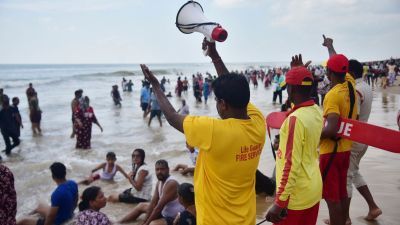Upgrade to tap millions more: Govt orders cellphone firms
Anticipating that even the 1 per cent figure too may not be enough.
Contrary to strong calls to limit its phone-tapping powers,the government has gone ahead and asked mobile operators to drastically enhance their call-interception capabilities so that 1 per cent of their subscribers can be simultaneously tapped essentially about 7 million mobile subscribers across India.
This would be a huge jump from the current practice which requires every operator to have the capability to tap 220-240 mobile phones in a service area about 5200 mobile phones across the country.
Anticipating that even the 1 per cent figure too may not be enough,the government wants all mobile operators to equip themselves for the future with interception systems aimed at tapping 5 per cent of their respective subscribers. This would mean an overall figure of about 35 million phones going by the current number of approximately 700 million mobile connections in India.
These details,along with instructions to enhance their Lawful Interception (LI) systems,were spelled out in a letter dated December 7 from the Department of Telecommunications. It stated: A need has been felt to modify the existing requirement for LI systems to simultaneously intercept up to 1 per cent of the installed capacity in a Service Area and provisioning and supporting 5 per cent of the installed capacity in a Service Area.
There are 23 service areas in Indias telecom map which would mean that the mobile operator would have to spread its capabilities in an even manner. Currently,Airtel has about 130 million subscribers while both Vodafone and Reliance have around 110 million subscribers each. To be able to have the capacity to tap up to 5 per cent of their subscribers,sources said,would require a major technological upgrade.
In fact,DoT wanted the service providers to give the upgrade details by December 16 but operators are said to have raised all kinds of red flags,including the cost,while some others have sought more time to complete their proposal.
There are broadly two forms of tapping. One of them is using an interception system,which once located in spot,can access all mobile phones that are operational within a certain range. This kind of equipment is commonly used by security agencies and forces in terror or militancy-affected areas.
The other form is lawful interception, where clearance is obtained to tap a particular phone number and the same is then accessed through the service provider. This order relates to the second category,where a mirror number is generated of the phone that is to be tapped and access provided to the agency concerned. Whenever there is activity on the intercepted mobile,the same happens on the mirror number. In this method,tapping can be done over a long period with better technical results.
While there is bound to be a security underpinning to this order too,sources said,the problem is that in most countries agencies develop these capabilities on their own and loop themselves with the operator whenever needed.
Here,however,the service provider will need to provide all the equipment and that could raise questions of who all have access to the tapped conversation,an issue thats suddenly acquired significance given the Radia tapes.






- 01
- 02
- 03
- 04
- 05

























